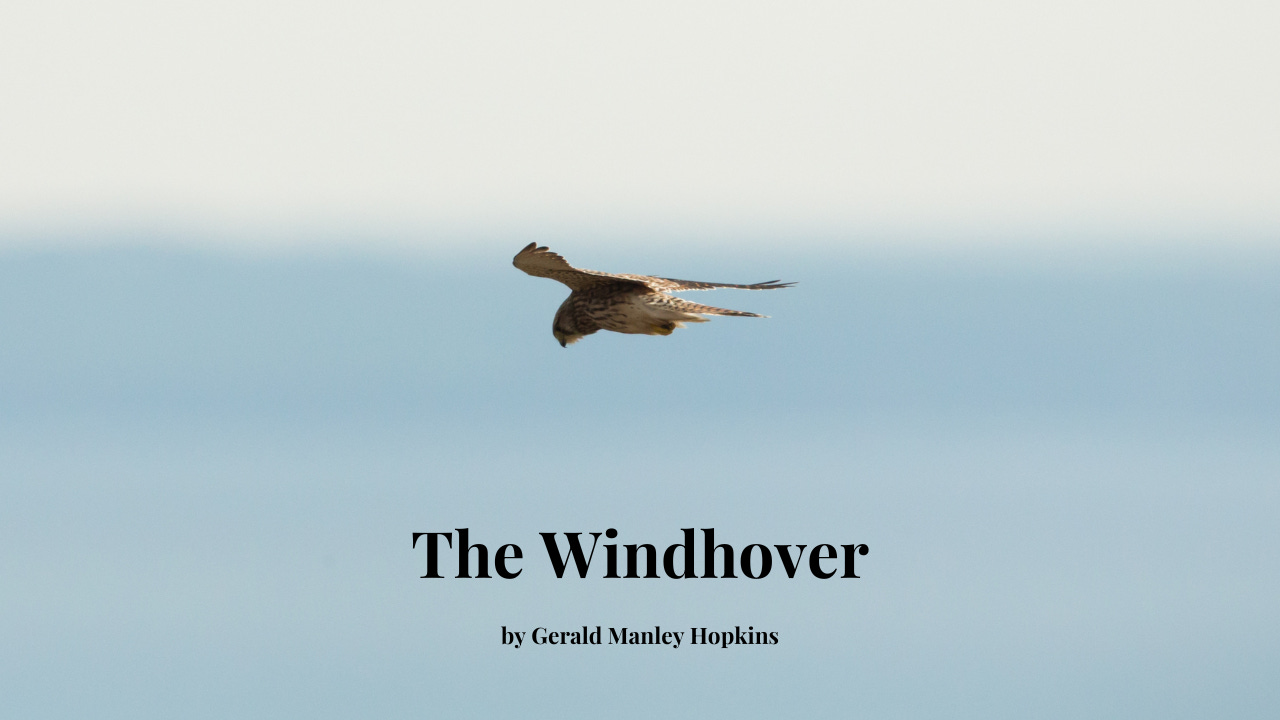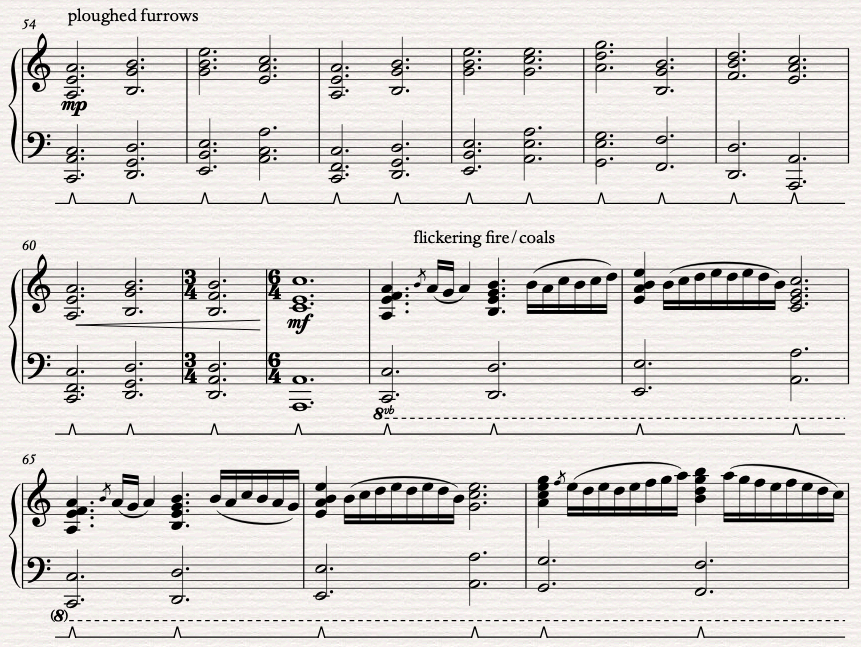The Windhover
Hidden glints of creation fire
To Christ our Lord
I caught this morning morning's minion, king-
dom of daylight's dauphin, dapple-dawn-drawn Falcon, in his riding
Of the rolling level underneath him steady air, and striding
High there, how he rung upon the rein of a wimpling wing
In his ecstasy! then off, off forth on swing,
As a skate's heel sweeps smooth on a bow-bend: the hurl and gliding
Rebuffed the big wind. My heart in hiding
Stirred for a bird, – the achieve of, the mastery of the thing!
Brute beauty and valour and act, oh, air, pride, plume, here
Buckle! AND the fire that breaks from thee then, a billion
Times told lovelier, more dangerous, O my chevalier!
No wonder of it: shéer plód makes plough down sillion
Shine, and blue-bleak embers, ah my dear,
Fall, gall themselves, and gash gold-vermilion.
While I was working on the piano piece based on this poem, my husband and I went away for weekend break to Venus Bay in the Gippsland area of Victoria. On our first morning’s venture outside to survey the inlet we saw a windhover (kestrel)!! I couldn’t believe it. I had never seen one in person before. It seemed an unexpected grace.
It did its dance of flying swiftly around, then hovering for a while in the sky, then diving down to try and catch something. It was totally oblivious to the two gawking city dwellers below. I tried taking some rather average footage with my phone (below) but in the end I just had to stop and enjoy the beauty and peace of the moment sans phone.
There is nothing like experiencing something yourself to help you understand another person’s description of it. It is clear that Hopkins is describing a deeply personal and spiritual moment while watching a windhover in this poem. Though I didn’t experience the depth of feeling, perhaps, as he did, I did gain a deeper appreciation for the wonder of it. It was mesmerising.
The first octet stanza in his poem is extraordinary in its use of language to describe the motion of the windhover. At first the language used is slow with the use of repetitive sounds that takes time to understand but reflects the hovering motion of the windhover. The language then becomes swifter and easier but lengthening out at times to reflect the swift flight, gliding and rising motions described. Then there is that glorious description of the sudden descent like an ice skater’s smooth but swift glide on the ice. It culminates in that glorious rhapsodic line: “My heart in hiding, Stirred for a bird, - the achieve of, the mastery of the thing!”
The expected shift of the next stanza (ordinarily a sextet but this time divided in two) is not evident until the last line where it is clear that praise of the windhover has shifted to the fire of Christ “my chevalier”. This fire depicts God’s creative work. There is also a shift from a description of motion to light.
The last stanza, though keeping with a description of light, shifts to the picture of an ordinary ploughed field where the overturned soil speckles and shines. It is like the embers of a fire which when broken open shine a brilliant red and gold.
We witnessed a bushfire recently, rather unnervingly close to our home. It was at its worst in the middle of the night with embers flying high in the sky and thankfully away from us, but those sparkling, glittering embers were dangerously beautiful.
Hopkins’ main point seems to be that the fire of creation can be seen in all things, be it a bird hovering and soaring in the sky or the plod of ploughing a field. It is glorious, sometimes hidden, dazzling and dangerous.
As always I have greatly enjoyed meditating on this poem, while writing this piece of music, with the added bonus of having seen a windhover in person. I have tried to capture the hovering motion with oscillating semiquavers in a small pitch range with slow modal chords underneath.
Here are some of my annotations for the first section which mirrors the first stanza:
The next section is a regimented 8 bar hymn representing the furrows of a ploughed field. On its repeat, I have added semiquavers in between the ponderous chords to represent the flickering creation fire within. The semiquaver fire theme is also reminiscent of the windhover theme.
We return to the windhover theme again for the final section which reiterates part of the first section but finally fades away.
Here is the piece in full:
May we have eyes to see the unexpected grace moments and catch a glimpse of God’s creation fire glinting out from the ordinary.
Naomi Brown









